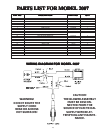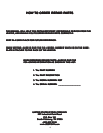8
When considering a masonry chimney, round tiles are preferable to square or rectangular, as round
tiles have much better airflow characteristics and are far easier to clean. Unfortunately, most North
American chimneys use square or rectangular tile liners that are really designed for open fireplaces,
not stoves or furnaces. Of most importance, second only to overall chimney height, is the diameter of
the flue liner itself. In most instances, it should be sized to the appliance; i.e., 6" flue outlet on the
appliance requires a 6" chimney. The inner diameter should never be less than the flue-outlet diameter
and should never be greater than 50% larger than the appliance flue outlet. For example, do not expect
a wood or coal burning stove or furnace to function properly if installed into a chimney with a flue greater
than 50% more than the appliance outlet - - such as a 6" flue outlet requires a 6" diameter for optimum
drafting, but can function well with an 8", but becomes borderline beyond an 8" diameter.
Masonry chimneys built of concrete blocks with or without flue liners do not meet modern building
codes. A solid fuel appliance must not be joined to a chimney flue which is connected to another
appliance burning other fuels.
If your chimney has a typically oversized flue liner of, say 8 x 12 inches, or greater, or if it is unlined,
it will be necessary for you to reline the chimney, using any of the modern approved and economical
methods such as stainless steel, castable refractory, or properly sized fireclay linings.
If you have any questions regarding venting your appliance, feel free to contact the factory at the
address and phone number on this Owner's Manual. You may also contact NFPA (National Fire
Protection Association) and request NFPA Standard 211 (1984 Edition-US) or Canadian Standard
Association and request CAN/CSA-B365-M91(Canada). Another helpful publication is NFPA
Standard 908(US). Specify 1984 Edition of either of the above US publications.


















